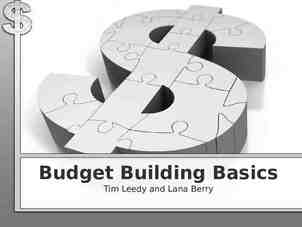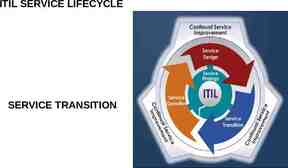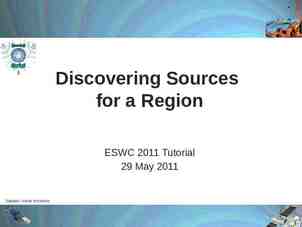SMALL BUSINESS DEVELOPMENT PORTFOLIO ARCHITECTURE 1
35 Slides2.24 MB

SMALL BUSINESS DEVELOPMENT PORTFOLIO ARCHITECTURE 1

Outline Objectives of the Portfolio Architecture Design architecture of the Portfolio Pre Start-up Phase Start-up Phase Growth Phase Mature Phase Decline Phase Integrated Cooperatives Development Model Sector Specific Programmes Small Business Ecosystem Proposed Way Forward Conclusion 2

Objectives of the Portfolio Architecture Foster alignment between small business policy and broader government economic policy – NDP, IPAP, MTSF Provide a platform for integrated planning between DSBD and its entities (Sefa and Seda) Develop and implement an integrated platform for programme design, implementation and monitoring and evaluation Build strategic partnership with the private sector and other SMME stakeholders. 3

Design Architecture of the Portfolio Portfolio design is premised: The integration of financial and non-financial support service at local level Facilitation of business support services through local business support service centres/ entrepreneurial support centres (one stop service for entrepreneurs) Support service be facilitated across the business development phase, sector specific 4

Design Architecture of the Portfolio The crowding-in of the private sector resources and skills National Monitoring and Evaluation System Building accountability Measuring effectiveness and efficiency Communicating and reporting to stakeholders The structure will allow, at a broad level, comparison with globally recognised models. 5

Stage Financial Support Pre start-Up Idea generation Non-financial support Legislation/Policy Partner with a Policy on competition (business university to train innovation plan competition sign students in Waive CIPC accord with companies entrepreneurship. registration to partake; CEOs to be Students’ ideas part of judging panel – presented to the in particular sectors). department and viable Set aside R500 000 for ideas funded through the development of DFIs. each business idea. (R50 million) 6

Stage Financial Support Pre-start Up Encourage Non-financial support Legislation/Policy Run entrepreneurship entrepreneurship in graduates to start schools with a view their own businesses to get learners to be (partner with tertiary interested in starting institutions – ring their own businesses fence funds) (Seda currently implementing) 7

Pre Start-up Stage Pre-Start Up Financial Support Non-financial support Legislation/Policy Universities to constitute The DSBD to partner with Shorten turnaround and develop students’ the Department of Basic teams. Private companies Education. time for to fund business ideas Mass entrepreneurship provision through their CSI funds. programme to be executed of services Provide funding for through partnerships with (maximum market research FET colleges. 10 working (feasibility study). Students to focus on one days). niche opportunity. 8

Stage Financial Support Start-up Start Funding Package R50k – R5 million Start-up Package will Non-financial support Legislation/Policy include a combination of working capital and equity finance. Business Plan Streamline Development registration system Marketing Plan that can be delivered formulation at local level through Start-up mentoring, one-stop access coaching and points. counselling Online registration system that will enable an enterprise to be registered with CPIC, DOL, SARS, Municipality. 9

Stage Financial Support Non-financial Legislation/Policy support Start-Up Pre-requisite for such Module 1: funding will be Introduction to also enable an participation in the entrepreneurship enterprise to apply non-financial support Module 2: for bank account, programme relating Business telephony service to Business planning and other relevant Module 3: start-up registration Start-up funding will Marketing and requirements. be for enterprises Sales. Planning. Online system must between 0-3 years. 10

Start-up Stage Start-up Financial Support Non-financial support Legislation/Policy To support income Module 4: Product Streamline generation activities in rural and service registration should areas, i.e. support Micro- development be linked to Module 5: Human reducing the cost of Institutions who will have resource doing business and the expertise and lending management reducing red-tape. financing methodologies. 11

Start-up Stage Start-up Financial Support Non-financial support No risk capital contributions required (To assist SMMEs that are unable to raise Legislation/Policy Module 6: Financial management Shared application funding from banks and platform (HR, other traditional funding accounting, CRM, institutions due to lack of etc.). trading history, security and risk capital). 12

Stage Financial Support Growth (3-5 years old) Supplier Trade Credit Non-financial support (Sector specific Sector specific Legislation/Policy Sector specific mentoring support. studies (legislative Quality and ISO and regulatory) that suppliers to provide accredited inhibit growth. e.g. trade credit to small programmes to Automotive – panel enterprises on the support beating, market basis of a portfolio competitiveness. concentration. agreements with key guarantee that can be issued by Sefa). 13

Stage Financial Support Growth (3-5 years old) Bank Guarantee Non-financial support Establishment of programme with sector specific trade commercial banks for warehouses to working capital, especially facilitate market for enterprises that access (secondary participate in Government co-operatives). procurement. Step up innovation. Invoice discounting to Increase sales and support cash flow in Legislation/Policy marketing efforts. enterprises. 14

Stage Financial Support Mature Venture capital/angel Non-financial support Programmes that financing (consider new support quality opportunities and management and business ventures). standards. Expansion financing. Export financing. Legislation/Policy Conduct macro market analysis. Formulate a strategy for further growth. Export readiness programmes and assessments. Small business trade missions. Trade information – 15

Stage Financial Support Decline Refinance through business rescue. Non-financial support Business rescue, Legislation/Policy Develop a turnaround and Business retention rescue, measures. turnaround and retention strategy. 16

While it’s possible to make an argument for integrating cooperatives into the same value chain as SMMEs, what’s clear is that a new approach to cooperatives is required. We favour the creation of a stand-alone structure for cooperatives in order to achieve this. This function would take ownership for cooperatives at a strategy level and would draw on subject matter expertise from policy, legislation, programme design and monitoring and evaluation functions within the department. 17

The Cooperatives Development Agency, although it is a department structure, should be established and incubated within SEDA. This will enable a focussed effort in the department that will remove distractions from other areas of the business and also capacitate the cooperatives unit to improve delivery against the mandate. The following Integrated Cooperatives Development Model needs to be implemented by the Portfolio: 18

19

Stage Financial Support Non-financial Legislation/Policy support Sector Specific Small Sector Specific financing Sector Specific non- Business Programmes instruments, either through financial support linked to government Sefa or sector specific services through Industrial and Economic retail financial sector specific Policy Agriculture, intermediary. incubators (physical Clothing and Textiles, as well as virtual). Automotive (component manufacturing), construction, etc. 20

Sector Specific Programmes These will co-ordinate programmes (nationally) with specific sector outcomes and will be linked to government policy such as procurement, local content, BBBEE Codes, licensing, and other government supply incentives. 21

SBD Portfolio Architecture based on the existing eco-system for Small Businesses and Cooperatives Business Growth Cycle The eco-system for small and cooperative enterprises can be mapped out effectively through the lenses of the business growth cycle. Role players in the space can easily be segmented and the support they provide. This allows the gap in the sector to be identified and addressed in a targeted systematic format. 22

GEM Model of business phases and entrepreneurship characteristics 23

SBD Portfolio Architecture based on the current eco-system for Small Businesses and Cooperatives Business Growth Cycle Pre-Start Up phase Growth Phase Maturity Phase Decline Phase Products & Services SBD Portfolio role in the eco-system Incentives Loans Mentorship Technical Training Business Development Skills Legislation Public and Private Sector Role Players and support services CIPC SARS TIA Innovation hub SEDA SEFA Venture capital CBDA NYDA NEF CBOs NGOs Chambers Municipalities SEDA SEFA NEF NYDA Provincial Agencies EEDP (dsbd) IDC DTI CSIR Research & Review Programme Design Pilot and JV Setas Chief Procurement officer Market Access Intermediaries CSIR Export Credit agency Banks Business Rescue, turnaround, and retention. Policy and Research Strategy development M&E instruments Programme Design Programme Implementation 24

Key ecosystem functions DSBD (Policy, legislation, strategy, M&E, etc) Seda (non-financial support services) Other departments (National, provincial and local) Donors (technical and financial support) Sefa (financial support services) Enterprise Academic institutions (education) International Markets Private sector (e.g. financial institutions) Think-tanks (Knowledge and research) NGOs and CBOs (Training, info dissemination) Business Chambers (Advocacy) Services SETA (Venture Creation Programme) 2015 25 25

Proposed Way Forward Small Enterprises It is proposed that the architecture must determine the number and/ or percentage of small enterprises that should be functioning optimally in order for the small and expanding firms to realise the desired job creation target. To this end and in line with Goldman Sach’s recommendation, the architecture must ensure that about 300 000 small enterprises are fully functional to contribute to inclusive growth. 26

Proposed Way Forward Business Growth Cycle Once this determination has been made, the SBD Portfolio should develop a comprehensive business services and products architecture that will ensure a wide-ranging support to the small business sector in different business growth cycles. The business growth cycle includes; decline phase, maturity phase, growth phase, start-up phase, pre-start-up phase. It is highly recommended that export ready enterprises should also be included on the list of small enterprises for which a concerted effort should be made to provide tailor-made support. 27

Proposed Way Forward Priority Industries It is recommended that specific industries be considered for prioritisation by the SBD Portfolio. These could include the priority industries that were approved by the Department as the sectors that the department could focus on in order to drive the development of small enterprises in the country. 28

Proposed Way Forward The industries are: namely, trade; business services; construction; transport, storage and communications; and personal services. The industries could be clustered as follows: trade and business services; construction, transport and storage; personal services; creative industries & communications; and National Industrial Policy Framework (NIPF) / Industrial Policy Action Plan (IPAP) Integration Projects. These are the sectors affirmed by the Bureau of Economic Research (2017) as the main sectors where small enterprises operate (see diagram in next slide). 29

SMMEs by Industry 30

Proposed Way Forward Support Instruments Once the above-mentioned processes have been finalised, a decision must be taken in respect of the targeted financial and non-financial support instruments that will be implemented in order to support small enterprises throughout the value-chain in the business growth cycles and priority industries. 31

Proposed Way Forward Key Role Players Strategic partners such as Development Finance Institutions must assume the role of supporting small enterprises with financial and non-financial support that the DSBD, SEDA and SEFA are unable to provide. These role players include, inter alia, NEF, IDC, Innovation Hub, SETAs, etc. 32

Proposed way forward It is recommended that the department pursue significant changes to its programme activity, including the transfer of eleven programmes to SEDA and/or SEFA and the restructuring of four more. Organisation DSBD Programmes Recommendation Red Tape reduction Upscale Database and credit rating system Upscale Craft CSP Transfer to SEDA ESD Fund Restructure and Transfer to SEFA Micro-Franchising Transfer to SEDA Co-location Restructure Intergovernmental Relations Restructure NIBUS SEIF Transfer to SEDA NIBUS IMEDP Transfer to SEFA Black Business Supplier development programme Start up enterprise Development programme Cooperative Incentive Scheme Cooperative development support programme Secondary Marketing cooperative scheme Enterprise Incubation Programme Transfer to SEFA & SEDA Restructure and Transfer to SEFA & SEDA Transfer to SEFA & SEDA Transfer to SEDA & Upscale Transfer to SEFA & SEDA & Upscale Transfer to SEDA Township and rural economic development Restructure Supplier Development Programme Restructure Market Access Support Transfer to SDP (internal) 2015 33

Proposed way forward Within SEFA and SEDA, a number of further enhancements to programmes are recommended as well as the transfer of policy, legislation and monitoring and evaluation related responsibilities to DSBD Organisation Programmes SEFA Wholesale Direct lending Credit Guarantee SEDA Incubation Technology Transfer Conformity assessment Supplier development programme Enterprise Coaching Programme Training on standards Cooperatives support Basic Entrepreneurial skills development National Gazelles Enterprise Coaching : Women Enterprise Entrepreneurship in schools Finfind Export development programme Trade facilitation Recommendation Upscale Restructure Upscale Maintain Upscale Maintain Restructure Upscale Transfer to Conformity (internal) Restructure Transfer to ECP (internal) Maintain Transfer to ECP (internal) Upscale Discontinue Upscale Transfer to EDP (internal) SEFA and SEDA’s policy, legislation and monitoring and evaluation responsibilities are often not specified as APP programmes and a full organisational review will be required to pinpoint where these capabilities lie. 2015 34

The SBD financial and non-financial business services and products architecture must deliver a programme formulation, planning and implementation methodology that will shape the type of comprehensive support instruments that will move small enterprises from the periphery right to the epicentre of economic development in the country. 35






